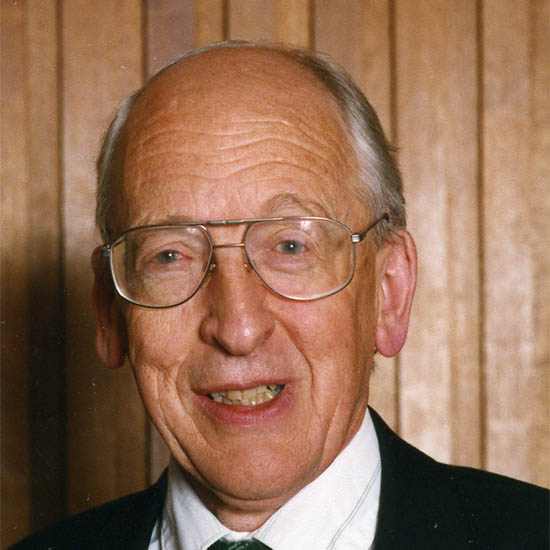Archie Howie is a pioneer in transmission electron microscopy, a powerful technique that uses electrons to image structures in thin materials or biological specimens at an extremely high magnification and resolution. Archie is best known for his work to interpret transmission electron microscope images of crystals and their defects.
In the late 1950s, jointly with Michael Whelan, he developed the dynamical theory of image contrast from dislocations — defects in the lattice of crystals. He then investigated the effects of inelastic scattering and of channelling of electrons in crystals on the image contrast. Together with four others, all subsequently elected as Fellows of the Royal Society, he co-authored the influential text, Electron Microscopy of Thin Crystals (1965). More recently, he developed electron energy loss theory for the scanning transmission electron microscope.
Archie’s contributions have been honoured with a number of awards, including the 1992 Guthrie Medal and Prize of the Institute of Physics and Honorary Fellowship of the Royal Society of Edinburgh in 1995. He received a CBE in 1998 for services to electron microscopy.
Subject groups
-
Engineering and Materials Science
Materials science (incl materials engineering), Instrumentation
-
Astronomy and Physics
Condensed matter incl softmatter, liquids, nano-materials
Awards
-
Royal Medal
In recognition of his outstanding contributions to the development and application of electron microscopy of materials, and to the underlying theories of electron scattering, in particular his extensive contributions to inelastic scattering theory, his systematic high resolution microscope studies of amorphous materials, his introduction of the concept of coherence volume for hollow cone dark field imaging and his pioneering use of a high angle annular dark field detector to image small catalyst particles.
-
Hughes Medal
For their contributions to the theory of electron diffraction and microscopy, and its application to the study of lattice defects in crystals.

